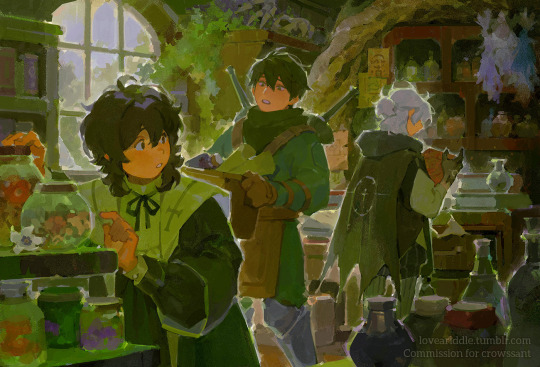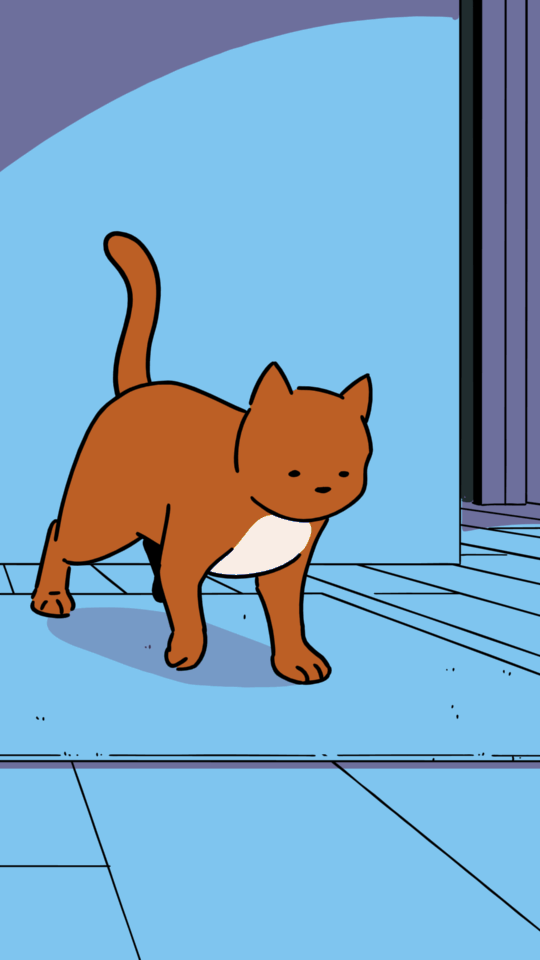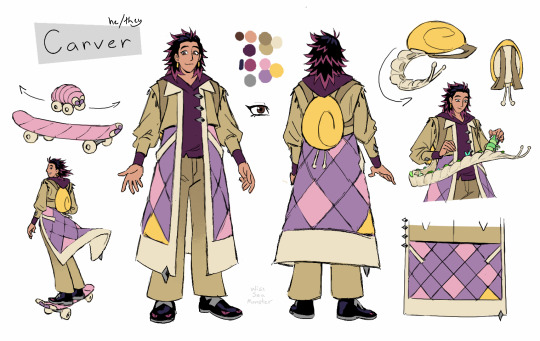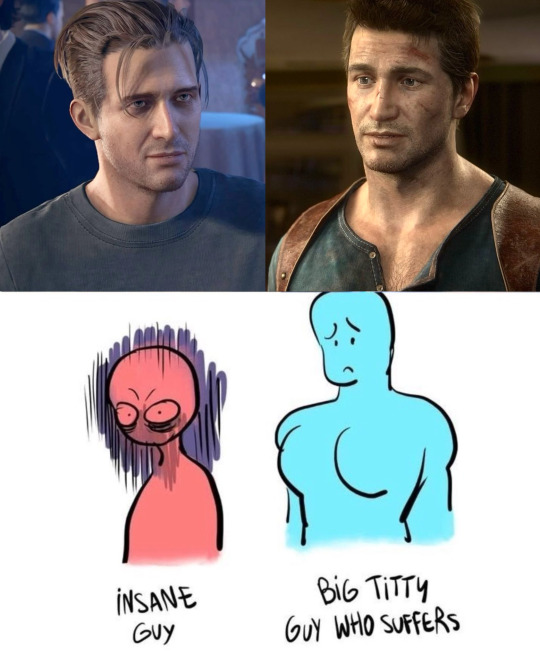~ Hi I'm Marr (aka Tea) ~ this is my fun house ~ basically a reblog blog ~ memes/art/cute animals/aesthetic shit/fandom stuff ~ I sometimes write, I guess ~ my art blog is LethalTeapot ~
Don't wanna be here? Send us removal request.
Text
*makes aus for own ocs* i am my own fandom
162K notes
·
View notes
Text
Made some cold cast metal claw pendants! Just finished patina and polish, these are made using a metal powder mixed with urethane to create the look and feel of metal without having to actually cast real metal. These 3" handmade pieces will be available for purchase this Friday at 2pm PST.

182 notes
·
View notes
Video
Her reaction to seeing my face after our nap
(Source)
95K notes
·
View notes
Text
72K notes
·
View notes
Text
76K notes
·
View notes
Text
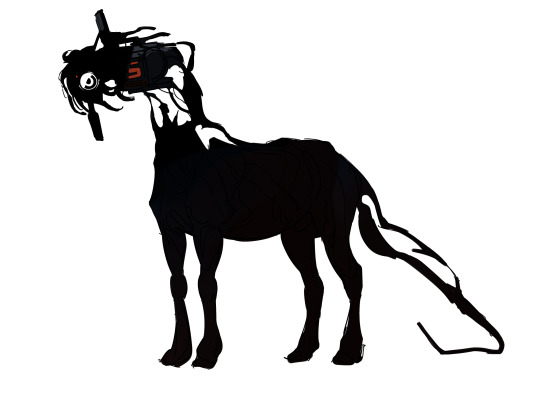
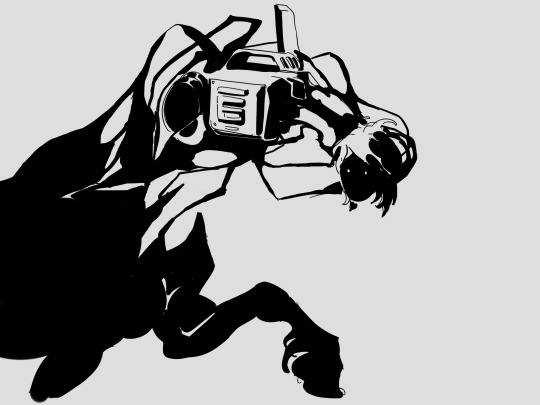
Camera & Action in their own original concept sketches. these were on my other blog but since ppl seem to enjoy the designs i thought i'd have them here as well
ppl may already know that pascal is no longer in the canon of inver, i decided to make a new story :)
so it's about these pseudo-AI assistant/virtual creatures called imimata (singular: imimaton). In the context of the story it's specifically about celebrity culture, virtual pop stars/TV presenters, and labour relations
[copy-pasted explanation from the other blog lol but i have a tag for it here too with a lot more posts!!]
Think of a completely formless seed that, for a fleeting moment, has the potential to become an artificial intelligence, but always changing, with endless permutations and no permanent state of being. when kept within a resonance chamber (the ‘container’ that may be analogue or digital etc), it is fixed into place long enough for it to be able to become. the chamber holds it and allows it to develop instead of dissipate away instantly. the process of development led by external forces - intentional or unintentional - is called 'encoding’. professional encoders will essentially use this shapeless state of being to encode commands, personality prompts, and rules, essentially moulding the thing in the resonance chamber into a form dictated by them. when i say unintentional, i also mean that exposure to any stimulus will always be a learning experience, and the thing will grow and develop no matter what if it first gets fixed in one place. but it’s only referred to as an imimaton once it has been encoded - no longer raw matter, but hammered into shape.
encoding is basically the socialisation of an impressionable thing into a biddable and useful form. in the early Hertzian era (when this technology took off, 1830s ish - crucially, before the commercial application of imimata, when they were curious playthings for idle Great Thinkers), encoding was a process of conversation lasting many years, often for purely philosophical purposes, literally talking at something until it talked back. prior to this, natural magnets could be used to fix a proto-imimaton, and people would think of them as similar to homunculi. in today's digital era, encoding takes the form of inserting storage media into the chamber, essentially running a program in a computer that reduced the encoding process to a few seconds and the flip of a switch. Pascal is an example of a Hertzian imimaton, composed of information stored in radio waves rather than a digital storage medium (basically - he's analogue)
outside of encoding, clauses may be placed upon the chamber itself and these are less socialisation, they do not form the building blocks of an imimaton, they are purely strict rules and routines which it is bound to follow. one such clause could involve the censorship of certain words (so that an imimaton cannot say fuck even if they would otherwise have been able to), or strict boundaries on what information an imimaton is allowed to learn. a common clause also boils down to making it impossible for one to attempt to manifest physically.
Once this was perfected, imimata entered the workforce at the turn of the 20th century.
[...]
When Pascal made his TV debut in 1969, it was hyped up for months with ads which depicted him on set and in more realistic ways (almost appearing to be photographs - some even were!), while public reaction was carefully monitored. This was highly experimental and it still was not known whether the concept of a virtual TV presenter worked, so although they did hype it up, there was a level of caution too so as not to invite negative press.
The first series did not involve public audience members but people from the broadcasting studio standing in for them (this was not made known at the time). They used a combination of camera tricks and graphics to make it feel like he was physically standing in a room with these people (bearing in mind he was strictly contained and had no manifestation outside the broadcast - he was within a container at the base of the mast tower, with a recording device which could cast his image live, so viewers at home were seeing cuts of the Pascal feed and cuts of the physical studio and audience stitched together to appear continuous)
That was part of the gimmick - it was commonly felt that an imimaton should never be permitted to manifest/should have no manifestation, so the fact that he supposedly was manifesting but friendly and contained was a draw. the ads leaned into it quite a lot - marketing copy implying that you could touch him, go on dates with him, etc but always with a cheeky wink, a "not really", the audience at home were in on the secret of it not being real. but it worked really well and was super effective to generate hype and it sparked an entire golden era of imimata and manufactured celebrities (but Pascal remained notorious for being one of the only ones that could believably interact with a studio audience in an unscripted manner, due to his 'maturity' as an imimaton, having been brought up in the 19th century conversational era of encoding, raised on a diet of talking to philosophers)
The second season of the show came out quickly and to much anticipation, and with members of the public actually participating for the first time. The broadcasters set up a wall of CRTs in the studio which would display him to people on-set, and wired up each audience member with a microphone so he could hear them too (he appeared to see them well enough through the camera equipment). he was excited to interact with them and they liked him too, but he always had this slightly mean streak which his broadcaster tried hard to soften. but the meanness worked really well in the reality/game show format where half the entertainment is watching audience members get dunked on sometimes
Episodes could be produced at a rapid pace by taping multiple at once - three identical sets were built for season 3 allowing for three episodes to be filmed at once because he could of course interact with everyone freely and essentially be in multiple places at once. this was also where the first issues showed up on-set - he began to miss his timing cues, arriving just a bit too late to the stage, or taking slightly too long to finish his nightly sign-off. this was not apparent publicly as the episodes were not shown live and could be edited, but any member of the public who was on the show was often hounded after by superfans, so some stories did come out about Pascal's 'odd' behaviour on set. there was a behind-the-scenes documentary made about the entire producing process in season 3 as well, which included some interviews with Pascal himself, but mostly consisted of his handlers and technicians excitedly explaining the broadcast apparatus and containment devices and so on.
Following The Incident, the rare copies of this film became highly sought-after by collectors.
901 notes
·
View notes
Text

Mini drawings🌱 Bonus for purchases over $100 before tax Online store will open tomorrow at 10AM EST Preview Here🌱

2K notes
·
View notes
Text
Rare footage. I've never caught him on camera in the act of chasing his tail before.
3K notes
·
View notes
